Osprey Tracking update – 5th November 2015
Following on from an extended excursion into Senegal last time out, FR3 made a brief return trip across the border on 2nd November in what was otherwise a relatively uneventful week for our young osprey.
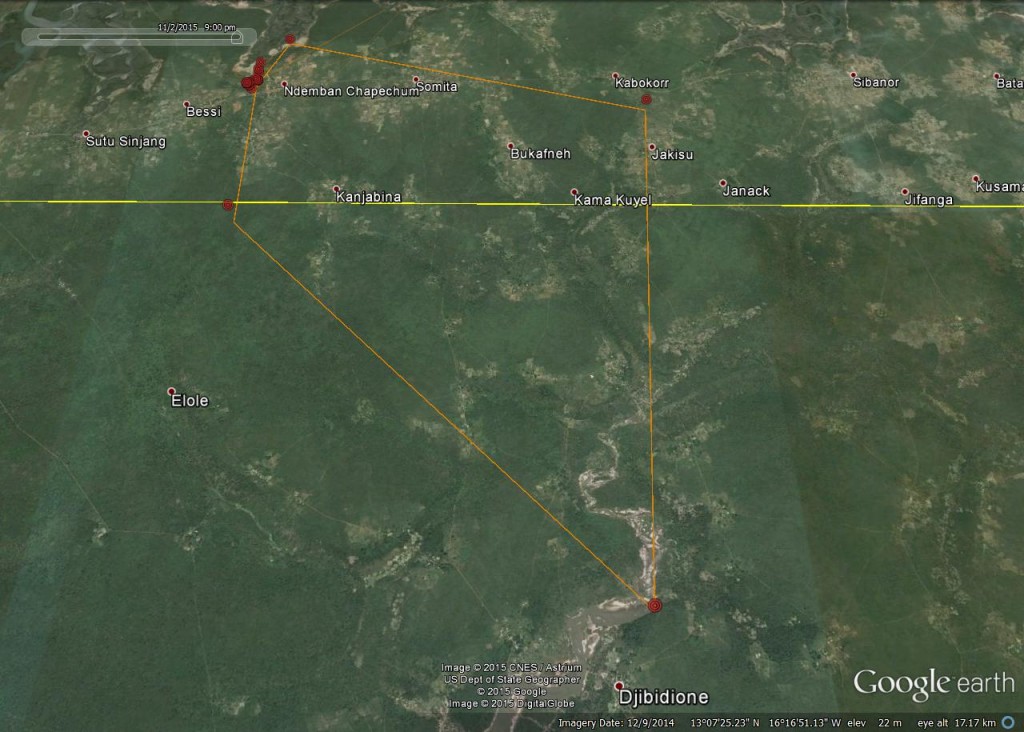
Virtually all of the past seven days have been spent in forest beside a small river between the villages of Ndemban Chapechum and Bessi.
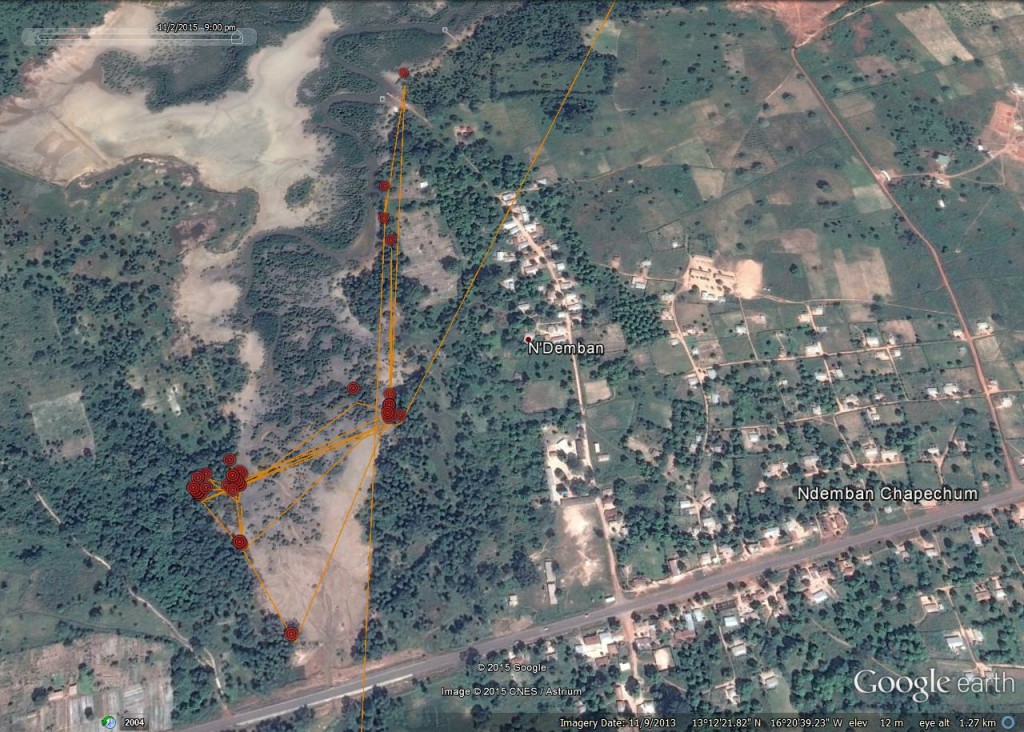
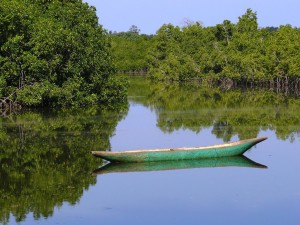
Sometime after 1pm on the 2nd, FR3 headed south across the border into Senegal. From looking at the satellite imagery in Google Earth this area appears to be densely forested. Having crossed the border FR3 then flew SE to meet the Koulimba (a distant tributary in the catchment of the Casamance River) near to the village of Djibidione at around 3pm. Our young osprey evidently didn’t stay here long (perhaps this minor river had already begun to dry up as the dry season takes hold?) and an hour later was back in the Gambia, between the villages of Jakisu and Kabokorr. By 5pm FR3 had returned to Ndemban having travelled approximately 45km (28 miles).
Meanwhile, FR4 has relocated and is now roughly 40km (25 miles) downriver from what was potentially looking like a permanent winter roost.
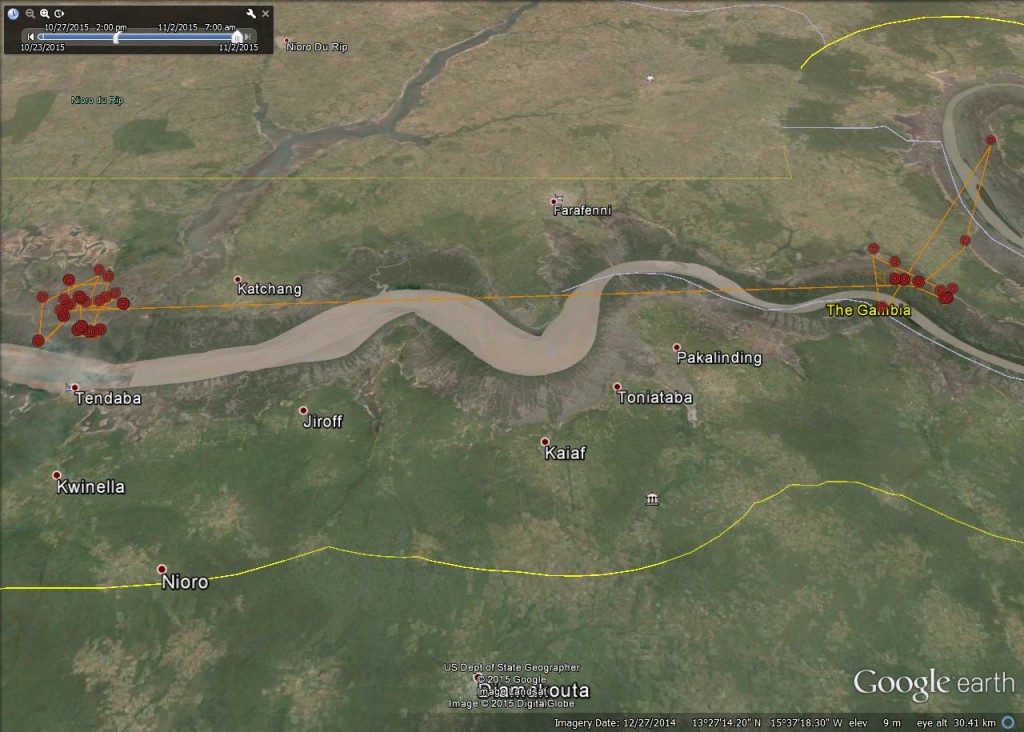
There was some indication that FR4 was perhaps becoming restless on 28th October, when our young osprey went on a 30km (20 miles) round trip across the bend in the Gambia River – by far the longest journey undertaken in many weeks.
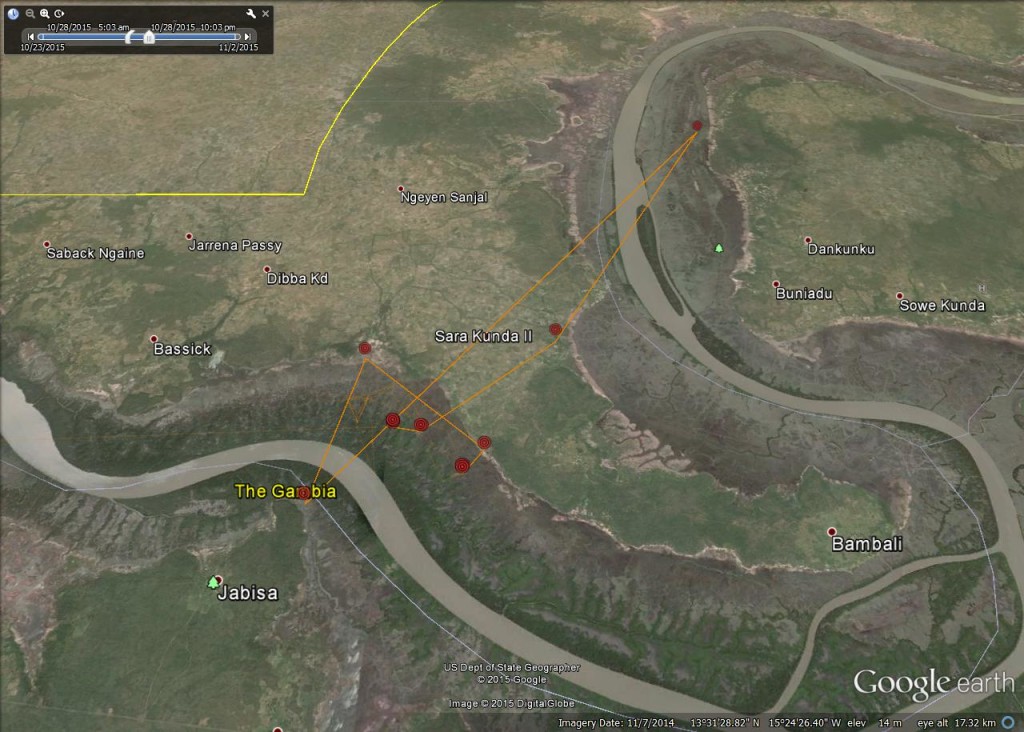
This was confirmed the following day, when at some point after 10am FR4 began flying west. By 2pm (there’s a gap in the data) our young osprey was by the Baobolon Wetlands to the north east of the village of Tunku and has remained there for the past few days. I mentioned these internationally important wetlands in a previous blog , as FR3 was near here last month. You can read more about them on the RAMSAR website.
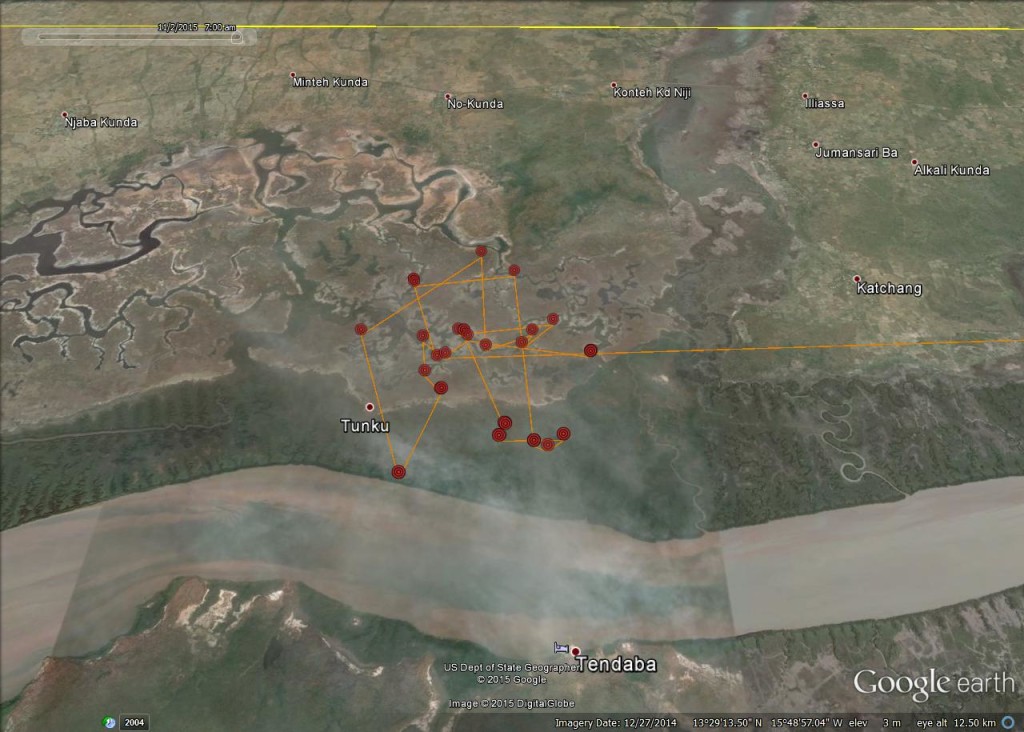
Will FR4 decide to stay here or continue west? We’ll just have to wait and see.
The satellite tags are now only sending data every 4 days (previously we were receiving data every 2 days). This is to save battery life during what is generally a period of reduced activity for the birds, now that the main migration is complete. Therefore it won’t be possible to update the tracking page as frequently.
Jonathan
Help protect Scotland’s wildlife
Our work to save Scotland’s wildlife is made possible thanks to the generosity of our members and supporters.
Join today from just £4 a month to help protect the species you love.
Preface
Following on from an extended excursion into Senegal last time out, FR3 made a brief return trip across the border on 2nd November in what was otherwise a relatively uneventful week for our …
